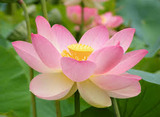
82 Results


Introduce students to the creative design process, based on the scientific method and peer review, by application of fundamental principles and learning to complete projects according to schedule and within budget. Subject relies on active learning through a major team-based design-and-build project focused on the need for a new consumer product identified by each team. Topics to be learned while teams create, design, build, and test their product ideas include formulating strategies, concepts and modules, and estimation, concept selection, machine elements, design for manufacturing, visual thinking, communication, teamwork, and professional responsibilities.
- Subject:
- Applied Science
- Engineering
- Material Type:
- Full Course
- Provider Set:
- MIT OpenCourseWare
- Author:
- Slocum, Alex
- Date Added:
- 01/01/2003
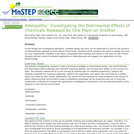
In this inquiry activity students work in groups to investigate allelopathy via research, using the scientific method to plan and carry out an experiment, and creating a formal written report and oral presentation.
- Subject:
- Botany
- Geoscience
- Life Science
- Physical Science
- Material Type:
- Activity/Lab
- Assessment
- Lesson Plan
- Provider:
- Science Education Resource Center (SERC) at Carleton College
- Provider Set:
- Pedagogy in Action
- Date Added:
- 12/09/2011
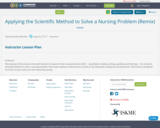
The purpose of this lesson is for adult learners to improve their communication skills --- specifically reading, writing, speaking and listening --- by using the Scientific Method to solve a nursing problem. The target audience of this lesson is adults at the 12th grade reading and writing levels. This lesson is designed for a face-to-face, instructor-led classroom setting.
- Subject:
- Applied Science
- Career and Technical Education
- English Language Arts
- Material Type:
- Assessment
- Case Study
- Diagram/Illustration
- Homework/Assignment
- Lecture Notes
- Lesson
- Lesson Plan
- Reading
- Date Added:
- 12/12/2017

“The Art of the Probable” addresses the history of scientific ideas, in particular the emergence and development of mathematical probability. But it is neither meant to be a history of the exact sciences per se nor an annex to, say, the Course 6 curriculum in probability and statistics. Rather, our objective is to focus on the formal, thematic, and rhetorical features that imaginative literature shares with texts in the history of probability. These shared issues include (but are not limited to): the attempt to quantify or otherwise explain the presence of chance, risk, and contingency in everyday life; the deduction of causes for phenomena that are knowable only in their effects; and, above all, the question of what it means to think and act rationally in an uncertain world.
Our course therefore aims to broaden students’ appreciation for and understanding of how literature interacts with – both reflecting upon and contributing to – the scientific understanding of the world. We are just as centrally committed to encouraging students to regard imaginative literature as a unique contribution to knowledge in its own right, and to see literary works of art as objects that demand and richly repay close critical analysis. It is our hope that the course will serve students well if they elect to pursue further work in Literature or other discipline in SHASS, and also enrich or complement their understanding of probability and statistics in other scientific and engineering subjects they elect to take.
- Subject:
- Arts and Humanities
- History
- Literature
- Mathematics
- Material Type:
- Full Course
- Provider Set:
- MIT OpenCourseWare
- Author:
- Jackson, Noel
- Kibel, Alvin
- Raman, Shankar
- Date Added:
- 02/01/2008

Biology is designed for multi-semester biology courses for science majors. It is grounded on an evolutionary basis and includes exciting features that highlight careers in the biological sciences and everyday applications of the concepts at hand. To meet the needs of today’s instructors and students, some content has been strategically condensed while maintaining the overall scope and coverage of traditional texts for this course. Instructors can customize the book, adapting it to the approach that works best in their classroom. Biology also includes an innovative art program that incorporates critical thinking and clicker questions to help students understand—and apply—key concepts.
- Subject:
- Biology
- Life Science
- Material Type:
- Full Course
- Provider:
- Rice University
- Provider Set:
- OpenStax College
- Date Added:
- 08/22/2012
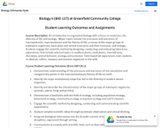
This course is an introduction to organismal biology with a focus on evolution, the diversity of life and ecology. Major topics include the processes and outcomes of microevolution, macroevolution and the history of life, a survey of the major groups of eukaryotic organisms, basic plant and animal structures and their functions, and ecology. Students engage the scientific method by designing, conducting and evaluating laboratory experiences that include selected topics in seedless plants, seed plants, invertebrates, chordates, animal behavior, ecology and evolution. Field-based lab experiences train students to observe, collect, measure and monitor organisms in the wild.
- Subject:
- Biology
- Life Science
- Material Type:
- Full Course
- Provider:
- Greenfield Community College
- Author:
- Amanda Hyde
- Date Added:
- 05/06/2019
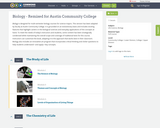
Biology is designed for multi-semester biology courses for science majors. This version has been adapted by faculty at Austin Community College. It is grounded on an evolutionary basis and includes exciting features that highlight careers in the biological sciences and everyday applications of the concepts at hand. To meet the needs of today’s instructors and students, some content has been strategically condensed while maintaining the overall scope and coverage of traditional texts for this course. Instructors can customize the book, adapting it to the approach that works best in their classroom. Biology also includes an innovative art program that incorporates critical thinking and clicker questions to help students understand—and apply—key concepts.
- Subject:
- Biology
- Life Science
- Material Type:
- Full Course
- Date Added:
- 02/13/2019
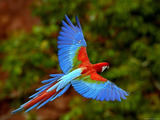
Life is all around us, both as multicellular organisms such as the iguana and bamboo above, as well as the unicellular microorganisms such as bacteria. Life is present on every continent, in the air and in the waters of the world. There is life even in the Mariana Trench, seven miles below the surface of the ocean. As of 2010 biologists have described and classified 1.7 million plants and animals, and estimate that there are till over five million species still undiscovered.This chapter will introduce the ways we study the science of Biology in the twenty-first century, the characteristics of living organisms and their classification.
- Subject:
- Biology
- Life Science
- Material Type:
- Unit of Study
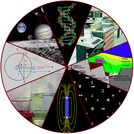
What is biology? In simple terms, biology is the study of living organisms and their interactions with one another and their environments. This is a very broad definition because the scope of biology is vast. Biologists may study anything from the microscopic or submicroscopic view of a cell to ecosystems and the whole living planet (Figure 1.2). Listening to the daily news, you will quickly realize how many aspects of biology are discussed every day. For example, recent news topics include Escherichia coli (Figure 1.3) outbreaks in spinach and Salmonella contamination in peanut butter. Other subjects include efforts toward finding a cure for AIDS, Alzheimer’s disease, and cancer. On a global scale, many researchers are committed to finding ways to protect the planet, solve environmental issues, and reduce the effects of climate change. All of these diverse endeavors are related to different facets of the discipline of biology.

Biologists study the living world by posing questions about it and seeking science-based responses. This approach is common to other sciences as well and is often referred to as the scientific method. The scientific method was used even in ancient times, but it was first documented by England’s Sir Francis Bacon (1561–1626) (Figure 1.5), who set up inductive methods for scientific inquiry. The scientific method is not exclusively used by biologists but can be applied to almost all fields of study as a logical, rational problem-solving method.
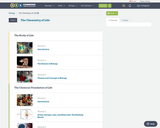
- Subject:
- Biology
- Life Science
- Material Type:
- Unit of Study
- Provider:
- Rice University
- Provider Set:
- OpenStax College

- Subject:
- Applied Science
- Biology
- Life Science
- Material Type:
- Module
- Date Added:
- 07/10/2017
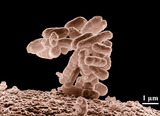
By the end of this section, you will be able to:Identify the shared characteristics of the natural sciencesSummarize the steps of the scientific methodCompare inductive reasoning with deductive reasoningDescribe the goals of basic science and applied science
- Subject:
- Applied Science
- Biology
- Life Science
- Material Type:
- Module
- Date Added:
- 07/10/2017

By the end of this section, you will be able to:Identify the shared characteristics of the natural sciencesSummarize the steps of the scientific methodCompare inductive reasoning with deductive reasoningDescribe the goals of basic science and applied science
- Subject:
- Applied Science
- Biology
- Life Science
- Material Type:
- Module
- Author:
- Tina B. Jones
- Date Added:
- 08/17/2019

After learning, comparing and contrasting the steps of the engineering design process (EDP) and scientific method, students review the human skeletal system, including the major bones, bone types, bone functions and bone tissues, as well as other details about bone composition. Students then pair-read an article about bones and bone growth and compile their notes to summarize the article. Finally, students complete a homework assignment to review the major bones in the human body, preparing them for the associated activities in which they create and test prototype replacement bones with appropriate densities. Two PowerPoint(TM) presentations, pre-/post-test, handout and worksheet are provided.
- Subject:
- Anatomy/Physiology
- Applied Science
- Engineering
- Life Science
- Material Type:
- Lesson Plan
- Provider:
- TeachEngineering
- Provider Set:
- TeachEngineering
- Author:
- Carleigh Samson
- Dua Chaker
- Jeanne Hubelbank
- Kristen Billiar
- Michelle Gallagher
- Terri Camesano
- Date Added:
- 10/14/2015
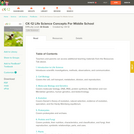
CK-12’s Life Science delivers a full course of study in the life sciences for the middle school student, relating an understanding of the history, disciplines, tools, and modern techniques of science to the exploration of cell biology, molecular biology, genetics, evolution, prokaryotes, protists,fungi, plants, animals, invertebrates, vertebrates, human biology, and ecology. This digital textbook was reviewed for its alignment with California content standards.
- Subject:
- Biology
- Ecology
- Genetics
- Life Science
- Material Type:
- Textbook
- Provider:
- CK-12 Foundation
- Provider Set:
- CK-12 FlexBook
- Author:
- CK-12
- Date Added:
- 11/29/2012
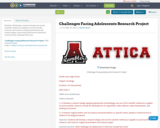
Students will develop a research design and use the scientific method as it applies to social scientific research, and create an original presentation and research paper concerning adolescents in American society and the challenges they face.
- Subject:
- Applied Science
- Material Type:
- Lesson Plan
- Date Added:
- 05/17/2017
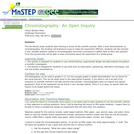
This is a laboratory investigation where students will use the scientific method to solve a new, experimental question in chromatography.
- Subject:
- Chemistry
- Physical Science
- Material Type:
- Activity/Lab
- Provider:
- Science Education Resource Center (SERC) at Carleton College
- Provider Set:
- Pedagogy in Action
- Author:
- cheryl winkler-miller
- Date Added:
- 08/16/2012
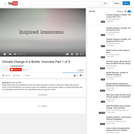
Suney Park wants her students to know that what they learn in class is relevant to their lives and the world. In this introduction, she shows us how her students come up with a plan to recreate the Earth and its atmosphere and test their own hypotheses about rising CO2 levels.
- Subject:
- Applied Science
- Education
- Environmental Science
- Material Type:
- Lesson Plan
- Teaching/Learning Strategy
- Provider:
- Teaching Channel
- Provider Set:
- Teaching Channel
- Author:
- Suney Park
- Date Added:
- 11/02/2012